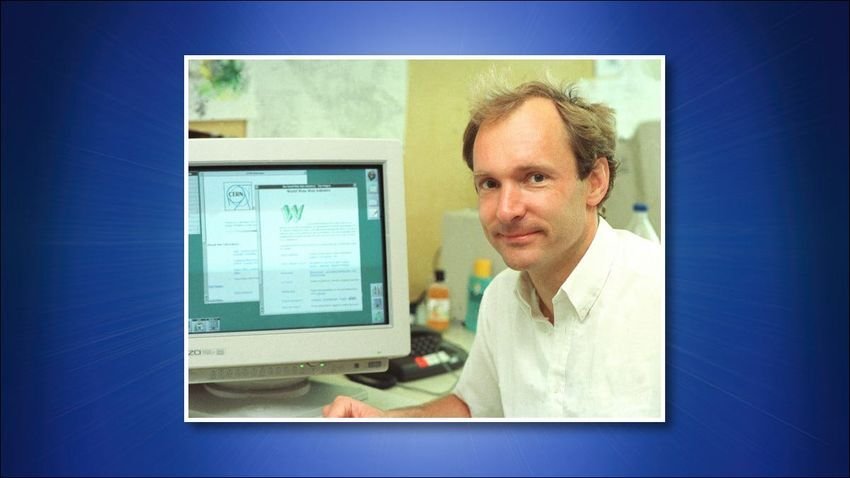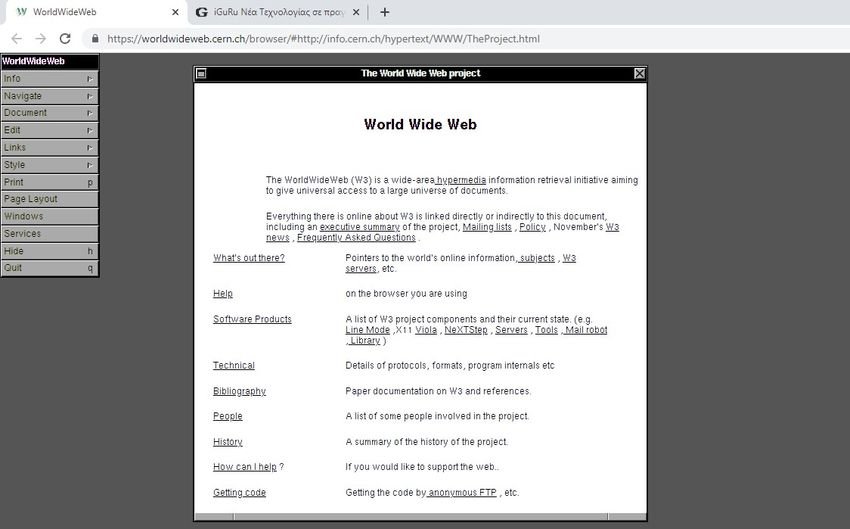Today marks 30 years since the creation of the internet and appearance of the first site.

Thirty years ago today, on August 6, 1991, Tim Berners-Lee made a post in the alt.hypertext newsgroup, about the work of the World Wide Web, inviting the public to take a look at the first website in the world. This call today reached the creation of one billion websites.
In 1989, a British programmer software at European Organization for Nuclear Research, The Tim Berners-Lee was disappointed with the way the scientists shared their research with his body. With many different file formats, programming languages and computer platforms. He found the tracking of electronic files and how they should be used frustrating and ineffective.
To solve the problem Berners-Lee envisioned a network system that would allow computers of various kinds to share information effortlessly through a network of computers. This invention, first documented in 1989, became the World Wide Web in short WWW.
In 1990, Berners-Lee wrote the first web browser, called WorldWideWeb.app, and the first web server, httpd. They ran to NeXTCube computer by Berners-Lee, which included advanced development tools shipped with the NeXTSTEP operating system.
During its initial testing phase, the World Wide Web remained an internal project at CERN. According to CERN, Berners-Lee published him first website on 20 December 1990. Just 21 days later, on January 10, 1991, Berners-Lee invited the high energy physics community to join his work, releasing his software outside of CERN for the first time.
Throughout 1991, Berners-Lee constantly improved his browser and server code with comments from others. On August 6, 1991, in response to a request from the alt.hypertext Usenet news group, Berners-Lee described the web and gave a public invitation for wider community involvement: “The WWW project was launched to enable high-energy physicists to share data, news and documentation. We are very interested in spreading the web to other areas and having gateway servers for other data. Partners welcome! »

This post is considered a key historical moment today, mainly because it is so well documented. In his next post the same day, Berners-Lee provided a summary of the WorldWideWeb project at CERN, outlining its purpose and how it works. At the end of the document, he included the now famous first URL of the site. Http://info.cern.ch/hypertext/WWW/TheProject.html, which you can still visit today.
The first site: Simple and informative
Entitled "World Wide Web", the world's first public website served as a key introduction to the concept of the web itself for those interested in technology. CERN is still hosts a copy of the site, which you can see in your modern browser, which is said to date back to 1992. Unfortunately, the original December 1990 version was lost in history.

Just like today, to use the first site, you would follow hyperlinks (underlined on the page) by double-clicking on the original WorldWideWeb browser. Each link would lead you to further sources of relevant information in a decentralized, non-hierarchical web model, where the information could take the most convenient form without strict restrictions.
It is worth noting that Berners-Lee's WorldWideWeb browser was able to edit the web source documents as well as view them, which was part of his original web vision. Subsequent browsers lost this feature until many years later. For a time, the web was mostly a read-only medium, with writing done using offline tools.
Try the first browser
If you want to know how the first browser was used, CERN hosts one simulate this first web browser, as it appeared in the NeXTSTEP operating system, and you can run it in your browser today. The menu on the side of the screen follows the NeXTSTEP Links at that time. It's rendered in grayscale because many NeXT computers come with monochrome, high-resolution displays.

The rapid development of the Web
After Tim Berners-Lee opened the web to the public in 1991, the new medium developed rapidly. In particular, some key milestones were achieved in 1993. On April 30, CERN published key technologies of the WWW in the public sector, paving the way for the web to become a royalty-free template where anyone could use it for free. This was a huge step.
Also in 1993, the NCSA released the Mosaic, the first web browser to display graphics in series (images within text on the page instead of in a separate window), causing a multimedia revolution on the web. Mosaic has also integrated support for other Internet protocols such as FTP, NNTP and Gopher, bringing them conveniently under the web browser umbrella. And Mosaic was free for λήψη, further encouraging the use of the WWW as an open platform.
In 1994, Tim Berners-Lee founded the World Wide Web Consortium (W3C), which was almost as important as the invention of the tissue itself. Without the open guidance of the W3C, it is possible that the web would have split into many incompatible technologies long ago, which would have prevented the web from being adopted rapidly worldwide.
But that did not happen, and today, there are over 1,2 billion websites on the Internet, according to Netcraft, although they estimate that only about 126 million of them are "active" and not just parked domain names or other placeholder symbols. However, there is no doubt that activity through web-based social media (which does not count on these results) has increased astronomically in the last decade.
Will the web ever give way to a future technology? Only time will tell, but for now, the WWW is still a noun tool that links most of humanity's information sources together, just as Tim Berners-Lee envisioned 30 years ago.





